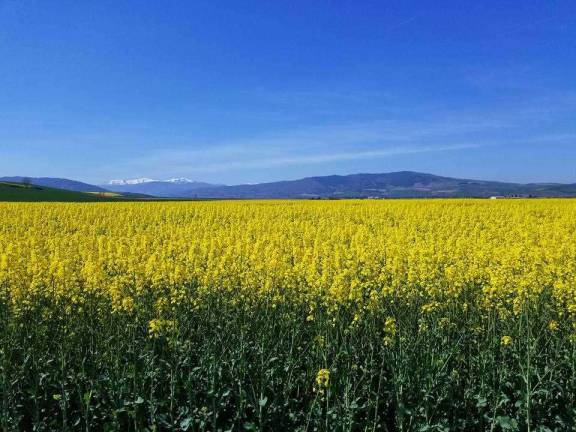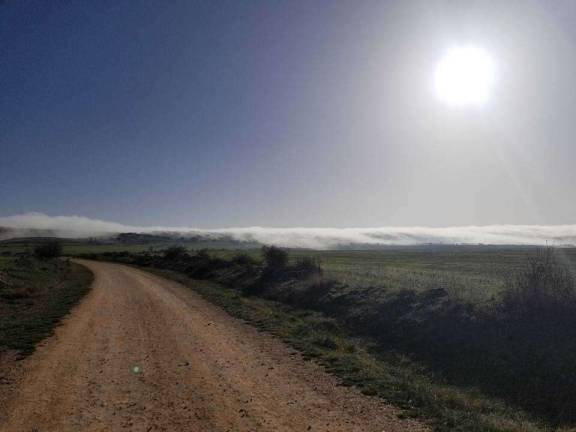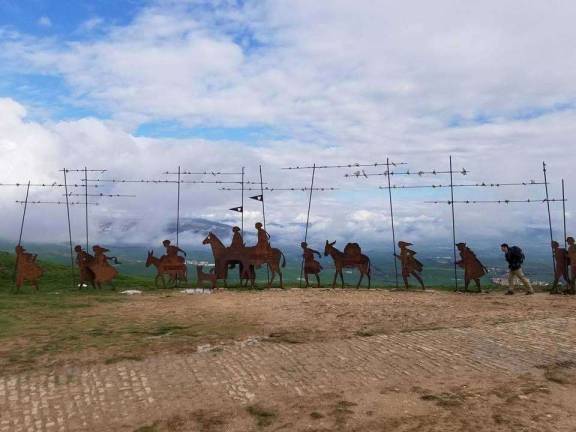A month on my feet







A pilgrim on the Camino de Santiago
By Jacob Straus
On April 11 I set off to walk across Spain. Over the next 31 days I followed the Camino de Santiago, an ancient pilgrimage that traces routes across Europe towards the remains of St. James the apostle, interred at the cathedral in Santiago de Compostela.
I walked the French Way—el camino francés—which begins in the French Basque town of St-Jean-Pied-de-Port, immediately crosses the Pyrenees and the Spanish border, and then meanders westward for 790 kilometers (around 500 miles). Upon arrival in St-Jean I stopped at the pilgrim office, where I picked up my walking passport and scallop shell. The passport is required in order to secure lodging in the albergues (pilgrim hostels) and to get the Compostela, a certificate obtained in Santiago that confirms how far the recipient has walked.
The scallop is optional, but full of symbolism. Historically, a shell was used by pilgrims as a measure for the food and water provided by churches along the way. Today those on the trail use water bottles and cutlery, but almost everyone carries a scallop on their bag or stick. Even the image is symbolic: the rays of the shell all point to the same spot. When laid on its side that point becomes Santiago, rays representing the many paths taken by pilgrims over the centuries. The first to walk the Way did so with St. James’ body in 812 AD on what is now known as the Camino Primitivo, and the pilgrimage has continued uninterrupted since that time.
My days were simple, painful, and relaxing. I usually woke early to beat the breakfast rush, as I would rather look at an empty road than a bobbing trail of backpacks. I’d stop for café con leche at the first opportunity (regrettably the Spanish don’t do black coffee), then lunch after four or five hours, usually a slice of Spanish tortilla or one of the enormous baguette sandwiches called bocadillos. If I was feeling stingy I’d stop at a grocery store and pick up enough food for a day or two; some of the most memorable lunches I had were sandwiches cobbled together roughly in a field and eaten sitting on a stone wall or against a tree. Dinner was usually at my albergue or a nearby restaurant. Food along the camino is remarkably good and inexpensive, as most of the path is through rural countryside. For €10 and proof of pilgrimage, you can expect a hearty two-course meal, dessert, and (depending on the owner) either half a bottle of wine or as much as you care to drink. The Spanish serve their red wine chilled, which took some getting used to.
I heard it said that there are three parts of the camino. The first is a physical challenge: not only is the terrain mountainous, but a new and soft-footed hiker has to endure enough soreness to build their walking legs. The second is a psychological test: two weeks in, just as your quads have alchemized into steel and your calluses have hardened, you hit la meseta—a seemingly-endless flat plain stretching for hundreds of kilometers across the middle of the country. Midway through the plain lies an ancient Roman road, and for about three hours I was awestruck to think I was walking the same ground as Caesar and his legionnaires. After the eight or ninth mile of ceaseless yellow dirt and beating sun, my awe had mostly turned to pity for myself and those poor soldiers in their strappy sandals.
They say that the third part of the trail is your reward for finishing the first two. The last week of walking is through Galicia, among the most naturally beautiful places in the world. In fact the most difficult terrain is here, but by that point your legs are strong and your endurance is high. The views were magnificent from the Leon Mountains, where I slept one night and walked through rocks rimed with frost the next morning. The serene joy I felt as I sat on the rocky cliff, looking out into the Atlantic at the end of my journey, was almost as rewarding as the walk itself.